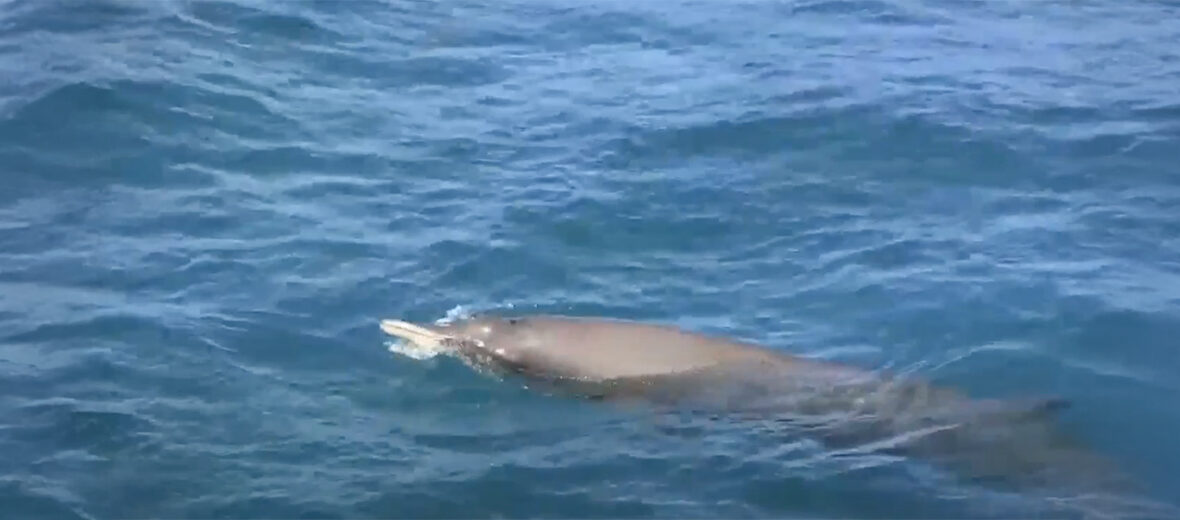
The Sowerby’s beaked whale, aka North Atlantic beaked whale or North Sea beaked whale, hales from the North Atlantic Ocean and can be spotted, with luck, off the shores of North America, Europe, and Africa. These whales face the threats of overfishing; bycatch (getting caught or tangled in long-lines or gill nets); water pollution; microplastics pollution; and noise pollution, which can cause confusion and strandings; and climate change, that can cause storms and warming of water temperatures. The IUCN lists these whales as Least Concern, as their numbers are presumed to be abundant enough to warrant this classification. Their population trend is, however, listed as unknown.
First the Stats…
Scientific name: Mesoplodon bidens
Weight: Up to 2,900 lbs.
Length: Up to 18 feet
Lifespan: Possibly 35+ years
Now on to the Facts!
1.) They were the first mesoplodont whale to be described. James Sowerby, an English naturalist and artist, first described them in 1804.
2.) Cookiecutter sharks often take bites from these whales, as is evident by the scarring found on their bodies.
3.) Small fish, octopuses, and squids comprise their diet.
4.) While these whales are occasionally seen in pods of up to 10 individuals, they are typically rarely seen at all as they are highly reclusive.
5.) Their swimming and diving behaviors are similar to deep-diving individuals like Risso’s dolphins and pilot whales than to other toothed whales.
But wait, there’s more on the Sowerby’s beaked whale!
6.) Dives of these whales last up to 40 minutes.
7.) Females undergo up to a 12 month gestation (pregnancy) that yields a single calf.
Did you know…?
Sowerby’s can dive to depths of up to 3,300 feet.
8.) Calves weigh in at up to 400 lbs. and measure up to 9 feet.
9.) They are included in the Memorandum of Understanding Concerning the Conservation of the Manatee and Small Cetaceans of Western Africa and Macaronesia (Western African Aquatic Mammals MoU).
10.) This species is infrequently hunted by Norwegians, since such practices have been long since abandoned.
Now a Short Sowerby’s Beaked Whale Video!
Be sure to share & comment below! Also, check out the Critter Science YouTube channel. Videos added regularly!

Want to suggest a critter for me to write about? Let me know here.
Some source material acquired from: Wikipedia & IUCN



